The opinions expressed in this blog are those of the author and are not reflective of the Brookings Institution or the World Bank.
Syria’s tenuous ceasefire brokered by Russia, Turkey, and Iran has rekindled hopes for ending the horrific violence in the country while reviving interest in various initiatives for reconstruction. The latter include the United Nation’s National Agenda for the Future of Syria, an ambitious undertaking with participation from the regime and opposition groups, assessments from the World Bank, and broader approaches from the European Union, the Arab League, Chatham House, and others.
The reconstruction could well be a generational effort at immense cost, taking Syria at least 20 years to reach its pre-war GDP once hostilities cease. Estimates on costs from the U.N., the International Monetary Fund, and the World Bank converge around $200 billion, but this barely hints at the war’s human tragedy. Half a million are dead, 2 million are wounded, and half the population has been forcefully displaced with some 5 million registered refugees—largely in Lebanon (1 million), Jordan (655,000), and Turkey (3 million)—and over 900,000 seeking asylum in Europe. There are 6.5 million internally displaced people out of 13.5 million Syrians listed as “in need” by the U.N., of which 6 million are children.
Without a comprehensive peace accord or an outright winner, recovery and reconstruction looks likely to be as fragmented and fragile as the war’s ceasefires and boundaries. Key questions on who will pay, who will draw up the blueprints, when and where the forcibly displaced will return, and whose construction firms, banks, consultancies, etc. will participate remain up in the air. On the ground, however, new realities are being created.
The ceasefire underlines Syria’s current de-facto division. The government and its Russian, Iranian, Iraqi, and Lebanese Shia allies control the south and the west, including most cities. Turkey’s safe zone is a reality in parts of the north. The province of Idlib, with 2 million inhabitants and internally displaced people, remains in various rebel hands and has a northern Kurdish zone. Islamic State holds significant territories around Raqqa, Palmyra, and the Iraqi border.
Iranian and Syrian government efforts to repopulate key areas with mostly Shia populations, replacing displaced Sunnis, are exacerbating divisions. Iran has negotiated directly with rebel groups to swap populations in areas around Damascus and further north by bringing in Lebanese and Iraqi Shia families. This process extends to Iraq as Iran and its allies aim for a safe corridor with direct access to Syria and Lebanon.
Reconstruction arrangements are also proceeding apace. In January 2017, agreements between Syria and Iran included a cell phone license, phosphate mining, thousands of hectares for farming, oil and gas terminals, and a port. There is also $660 million in electricity generation deals and plans for linking the electrical grids of Iran, Iraq, Lebanon, and Syria. Russia will likely play an even bigger reconstruction role with deals in off-shore energy, finance, trade, transport, and other sectors. China, a big presence in the pre-war energy sector, will expand on these while rebuilding Syria’s telecom infrastructure and planning further investments.
Turkey with the Free Syrian Army has cleared some 2,000 square kilometers within Syria, ousting the Kurdish Democratic Union Party and Islamic State forces, and plans to build towns for some of its 3 million Syrian refugees. Starting with state agencies and personnel, private contractors are to come in once the area is secure. Already, 450 Turkish-trained Syrian police officers, the vanguard of 5,000, have moved in. There are hopes that the EU’s agreement with Turkey on Syrian refugees may yield funds. President Trump’s campaign call for GCC funded safe zones is now supported by Saudi Arabia but despite closer cooperation in Syria with Turkey, the U.S. Administration’s plans remain unclear.
Non-state actors are also at play, including the Kurds’ Rojava region trying to consolidate its hold over conservative Arab areas beyond the traditional Kurdish territory. At the same, the Kurds face the closure of the Turkish border and barriers to trade with Iraq’s Kurdistan Regional Government, which places limits on rebuilding. Idlib province, a stronghold of Sunni rebels, has a robust construction sector. Barring major fighting, the open border crossings with Turkey means continued growth. Islamic State-held areas are contracting, and as the battle is joined for Raqqa, the IS “capital,” the group is moving resources to oil-rich Deir ez-Zor province near Iraq.
Jordan and Lebanon, hosting proportionally more refugees than any other country, also hope to benefit from Syria’s reconstruction and prepare the ground for refugee repatriation with support from international donors.
Yet, all these efforts fail to reach the scale of reconstruction funds needed. Especially with multiple sanctions on Syria and calls for more, international donors and others are effectively barred from the reconstruction process. Those with funds, the EU and the Gulf Cooperation Council for example, will only go ahead with a credible political transition. To the EU this means “a united Syria… where all citizens, regardless of their background, of their religion, of their ethnicity, of their political beliefs, can feel ownership…This will require probably profound transformation of the institutional system.”
Funding concerns and political agendas aside, it is indisputable than an inclusive reconstruction process is paramount if one is not to simply rebuild old fault lines. This means giving voice to local communities and the broader Syrian population. Yezid Sayigh of the Carnegie Middle East Center notes that otherwise “reconstruction will simply empower those who already possess key political levers and social capital, and produce skewed results in terms of reintegration of refugees and displaced persons, societal reconciliation, and sustainable, equitable economic development.”
For now, Syria’s disparate reconstruction efforts appear to be cementing divisions rather than building bridges.
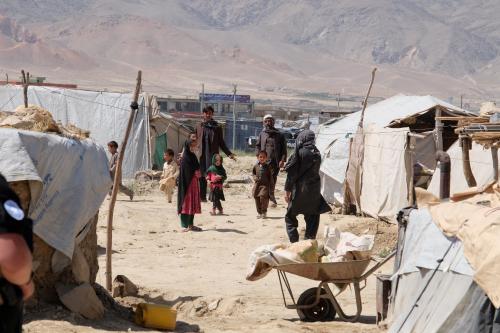
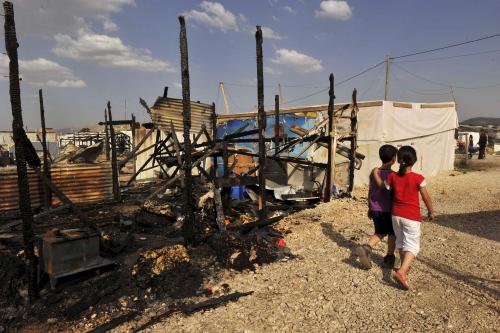
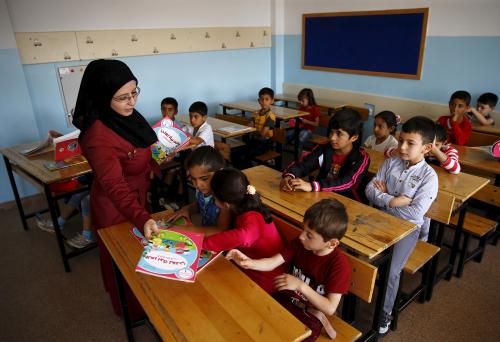
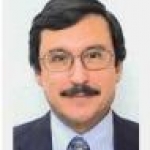
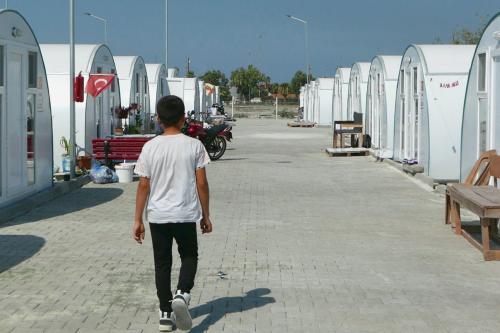
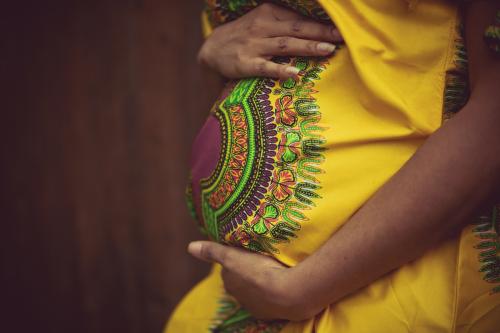
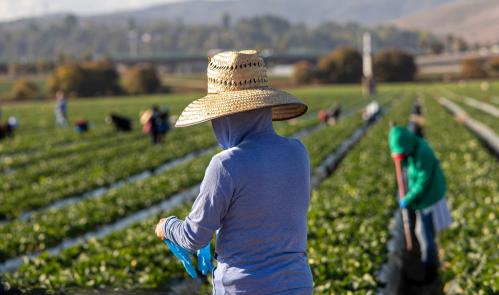
Commentary
Rebuilding or redefining Syria?
February 13, 2017